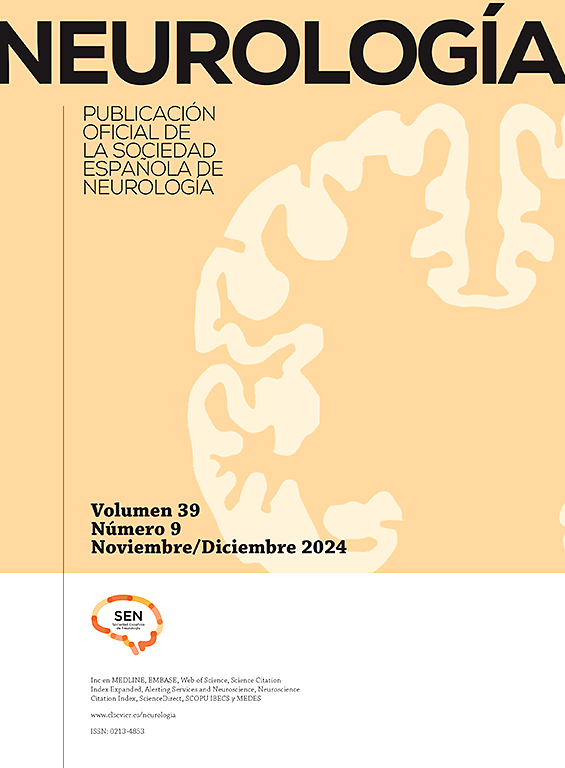了解西班牙中风死亡率趋势:一项全面的年龄、时期队列和连接点分析
IF 3.1
4区 医学
Q2 CLINICAL NEUROLOGY
引用次数: 0
摘要
本研究旨在更新和评估1982-2021年期间西班牙年龄-时期-队列(A-P-C)对卒中死亡率的影响。方法从1982-2021年国家统计局数据库中获取脑卒中死亡率和按年龄、性别划分的人口数据。使用美国国家癌症研究所的Joinpoint趋势分析软件来估计发病率及其时间趋势。使用对数线性泊松模型和似然惩罚函数来估计年龄、时期和队列的影响,以解决可识别性问题。结果两性(男性- 4.3%,女性- 4.6%)的年龄标准化死亡率(所有年龄段)在研究期间均有所下降。自2012年以来,30-64岁年龄段的女性自杀率一直保持稳定,但近年来,男女自杀率的下降速度都有所放缓。自20世纪初以来,出生队列中男女的估计相对风险在所有出生队列中都呈稳步下降趋势。然而,在1947年至1962年之间出生的女性中,风险的下降速度有所放缓。男性和女性都经历了RR的下降,在过去的十年中,RR趋于稳定(女性)或放缓(男性)。结论1982年至2021年间西班牙卒中死亡率的下降存在时期和队列效应。死亡率的下降不太可能抵消年轻人群中发病率可能增加的影响。这导致目前中风死亡率下降的速度(男性)放缓或停滞(女性)。因此,我们必须继续注重预防。本文章由计算机程序翻译,如有差异,请以英文原文为准。
Understanding stroke mortality trends in Spain: A comprehensive age-period-cohort and joinpoint analysis
Background
This study aims to update and evaluate the age-period-cohort (A-P-C) effects on stroke mortality in Spain over the period 1982–2021.
Methods
Data on stroke mortality and population by age and sex were obtained from the database of the National Institute of Statistics for the years 1982–2021. Joinpoint trend analysis software from the US National Cancer Institute was used to estimate the rates and their time trends. The effects of age, period, and cohort were estimated using a log-linear Poisson model with a likelihood penalty function to address the problem of identifiability.
Results
For both sexes (−4.3% for men and −4.6% for women), age-standardized mortality rates (all ages) decreased over the study period. With the exception of the 30–64 age group, where rates for women have been stable since 2012, the rate of decline has slowed in recent years for both sexes.
Since the beginning of the 20th century, the estimated relative risk in birth cohorts for both sexes followed a steady downward trend for all birth cohorts. However, the decline in risk has slowed down for women born between 1947 and 1962. Both men and women have experienced a decline in RR, which has stabilized (women) or slowed down (men) in the last decade.
Conclusions
Both period and cohort effects are present in the decline in Spanish stroke mortality between 1982 and 2021. It is unlikely that the decrease in mortality has offset the possible increase in incidence in younger cohorts. This has led to a slowing (in men) or stagnation (in women) of the current decline in stroke mortality. Therefore, we must continue to focus on prevention.
求助全文
通过发布文献求助,成功后即可免费获取论文全文。
去求助
来源期刊

Neurologia
医学-临床神经学
CiteScore
5.90
自引率
2.60%
发文量
135
审稿时长
48 days
期刊介绍:
Neurología es la revista oficial de la Sociedad Española de Neurología y publica, desde 1986 contribuciones científicas en el campo de la neurología clínica y experimental. Los contenidos de Neurología abarcan desde la neuroepidemiología, la clínica neurológica, la gestión y asistencia neurológica y la terapéutica, a la investigación básica en neurociencias aplicada a la neurología. Las áreas temáticas de la revistas incluyen la neurologia infantil, la neuropsicología, la neurorehabilitación y la neurogeriatría. Los artículos publicados en Neurología siguen un proceso de revisión por doble ciego a fin de que los trabajos sean seleccionados atendiendo a su calidad, originalidad e interés y así estén sometidos a un proceso de mejora. El formato de artículos incluye Editoriales, Originales, Revisiones y Cartas al Editor, Neurología es el vehículo de información científica de reconocida calidad en profesionales interesados en la neurología que utilizan el español, como demuestra su inclusión en los más prestigiosos y selectivos índices bibliográficos del mundo.
 求助内容:
求助内容: 应助结果提醒方式:
应助结果提醒方式:


